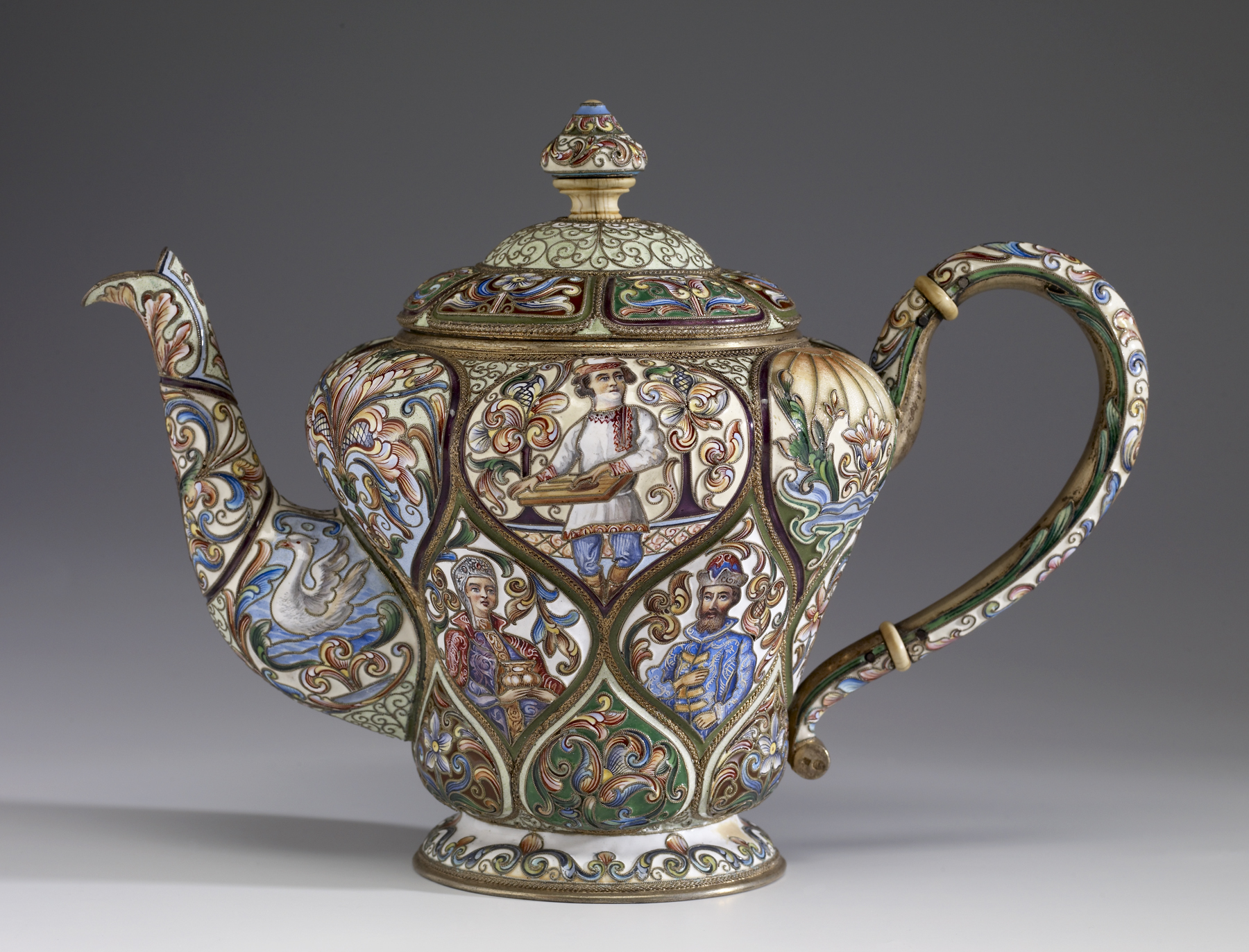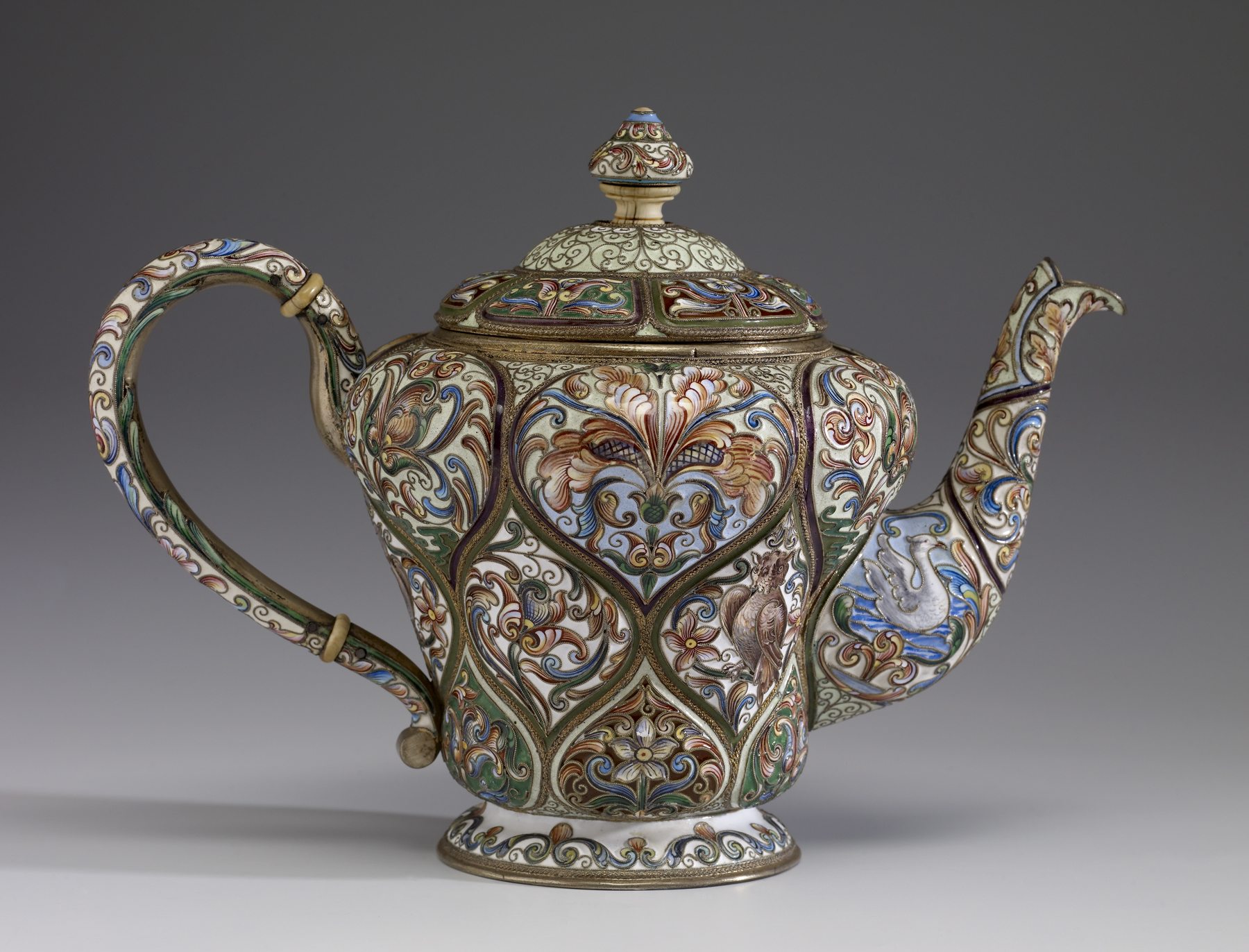Globular Teapot
(18th and 19th Centuries )
Three large and five smaller lobes, in repoussé, protrude from the surface of both the front and obverse sides of the teapot. Painted in the large lobes, on one side, are a musician playing a gusli, a traditional, stringed instrument; a boyarina holding a bratina; and a boyar standing in a landscape with flowers and a sunset. On the other side appear an owl, large blossoms, and foliage. Floating swans flank the base of the spout. The lid is decorated with two bands of decoration: the outer includes six small raised lobes with floral motifs on alternating deep red and dark green grounds, and the inner consists of filigree spirals over a white graduating to pale green ground. Ivory rings provide insulation for the handle and top knob of the lid.
Inscription
Provenance
Provenance (from the French provenir, 'to come from/forth') is the chronology of the ownership, custody, or location of a historical object. Learn more about provenance at the Walters.
Jean M. Riddell, Washington, D.C. [date and mode of acquisition unknown]; Walters Art Museum, 2010, by bequest.
Geographies
Russia, Moscow (Place of Origin)
Measurements
H: 6 5/16 x W: 8 11/16 x D: 4 3/4 in. (16 x 22 x 12.1 cm); Lid H: 1 15/16 x Diam: 3 1/4 in. (5 x 8.2 cm)
Credit Line
Bequest of Mrs. Jean M. Riddell, 2010
Location in Museum
Not on view
Accession Number
In libraries, galleries, museums, and archives, an accession number is a unique identifier assigned to each object in the collection.
In libraries, galleries, museums, and archives, an accession number is a unique identifier assigned to each object in the collection.
44.810




